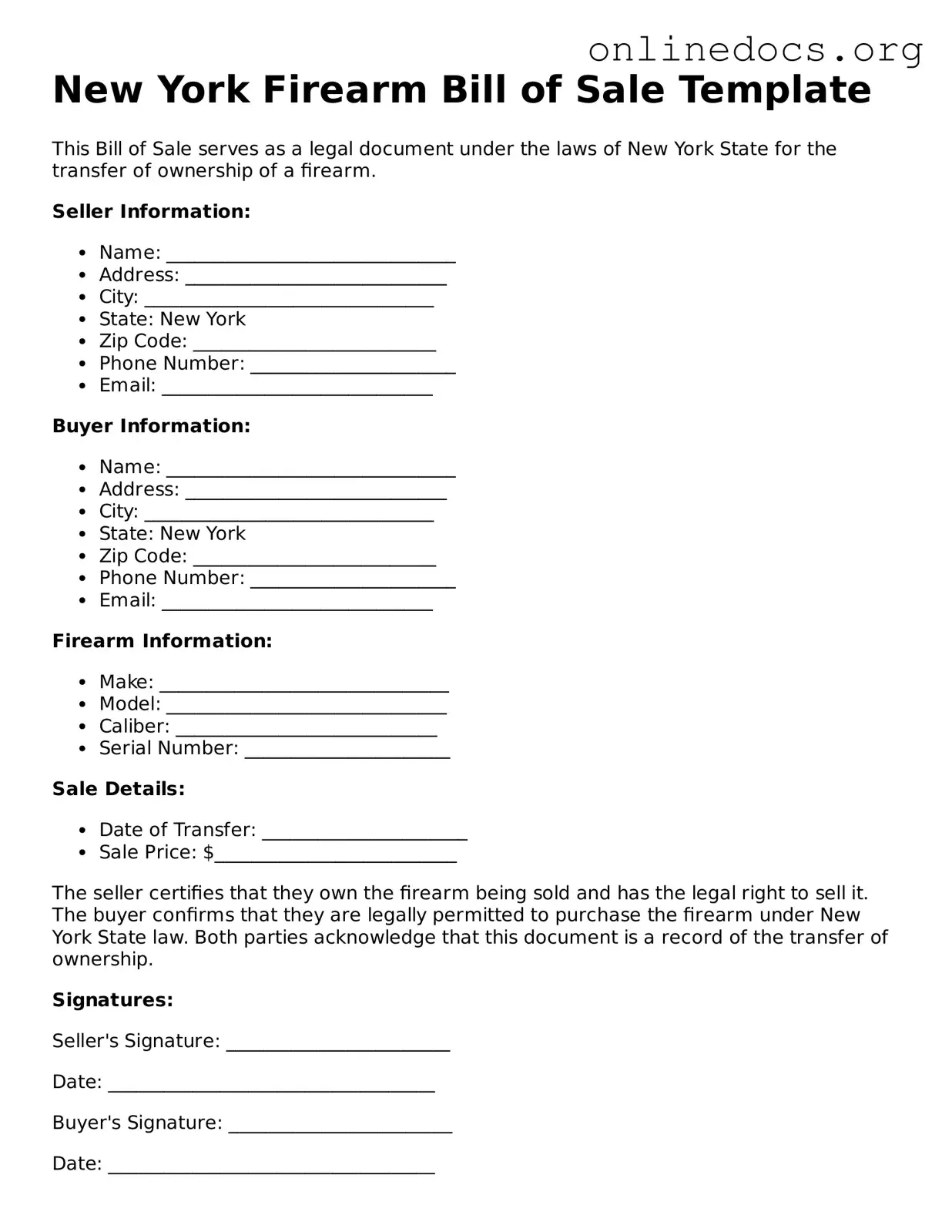The New York Firearm Bill of Sale form shares similarities with a Vehicle Bill of Sale. Both documents serve as proof of transfer of ownership. In the case of a vehicle, the seller provides the buyer with a document that includes details such as the make, model, and Vehicle Identification Number (VIN). Similarly, the Firearm Bill of Sale includes information about the firearm, such as the make, model, and serial number. Both forms help protect the interests of both parties by documenting the transaction and providing a record for future reference.
In addition to the various types of bills of sale discussed, one can find valuable templates and resources for creating these documents at legalformspdf.com, ensuring that all necessary legal criteria are met for the specific transaction at hand.
Another document that resembles the Firearm Bill of Sale is the Real Estate Purchase Agreement. This agreement outlines the terms of a property sale, including the purchase price, closing date, and any contingencies. Like the Firearm Bill of Sale, it requires signatures from both the buyer and seller, indicating their acceptance of the terms. Both documents are legally binding and serve to protect the rights of the parties involved in the transaction.
The Lease Agreement is another document that shares characteristics with the Firearm Bill of Sale. A lease outlines the terms under which a tenant may occupy a property, detailing responsibilities and rights for both landlord and tenant. In both cases, the documents require clear identification of the parties involved, descriptions of the item or property, and signatures to confirm agreement. Each document serves as a record of the arrangement, offering protection and clarity for both sides.
The Personal Property Bill of Sale is closely related to the Firearm Bill of Sale. This document is used for the sale of personal items, such as electronics, furniture, or collectibles. It includes details about the item being sold and the parties involved, similar to the firearm sale document. Both forms provide a written record of the transaction, which can be important for legal purposes and for resolving any potential disputes.
The Equipment Bill of Sale also resembles the Firearm Bill of Sale. This document is used when transferring ownership of equipment, such as machinery or tools. It includes the equipment's specifications and the sale price. Just like the Firearm Bill of Sale, it serves to protect both the buyer and seller by documenting the transaction and ensuring that both parties understand the terms of the sale.
A Gift Receipt can be compared to the Firearm Bill of Sale in certain contexts. While a gift receipt does not involve a monetary transaction, it documents the transfer of ownership of an item from one person to another. This can be relevant in situations where firearms are gifted rather than sold. Both documents provide a record of the transfer, which can be important for legal and personal reasons.
Lastly, the Business Sale Agreement is similar to the Firearm Bill of Sale in that it involves the transfer of ownership of a business entity. This agreement outlines the terms of the sale, including the assets being transferred and the purchase price. Both documents require detailed information about the parties involved and the items being sold. They serve to protect the interests of both the buyer and the seller, ensuring that all aspects of the transaction are clearly defined and agreed upon.
